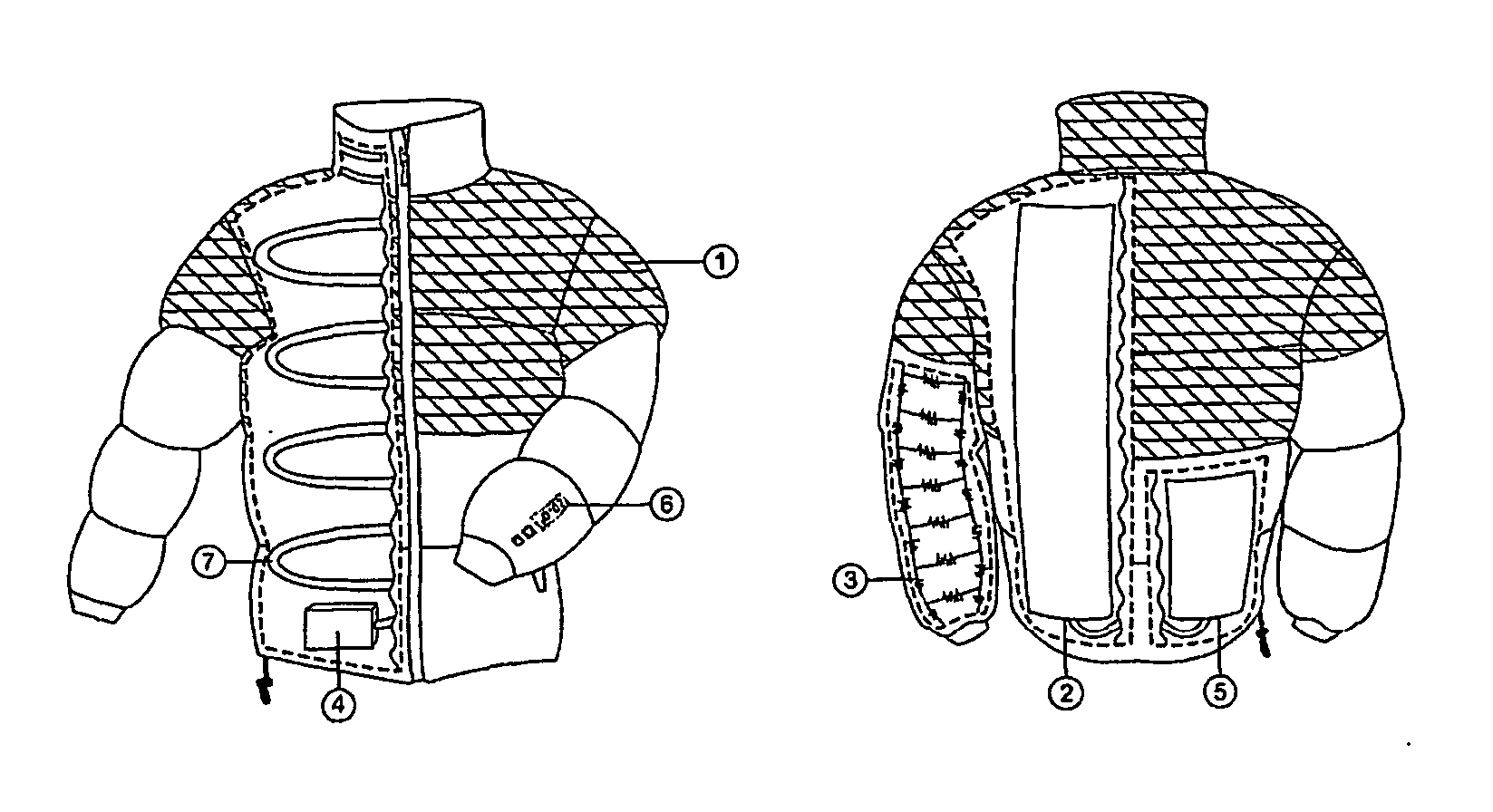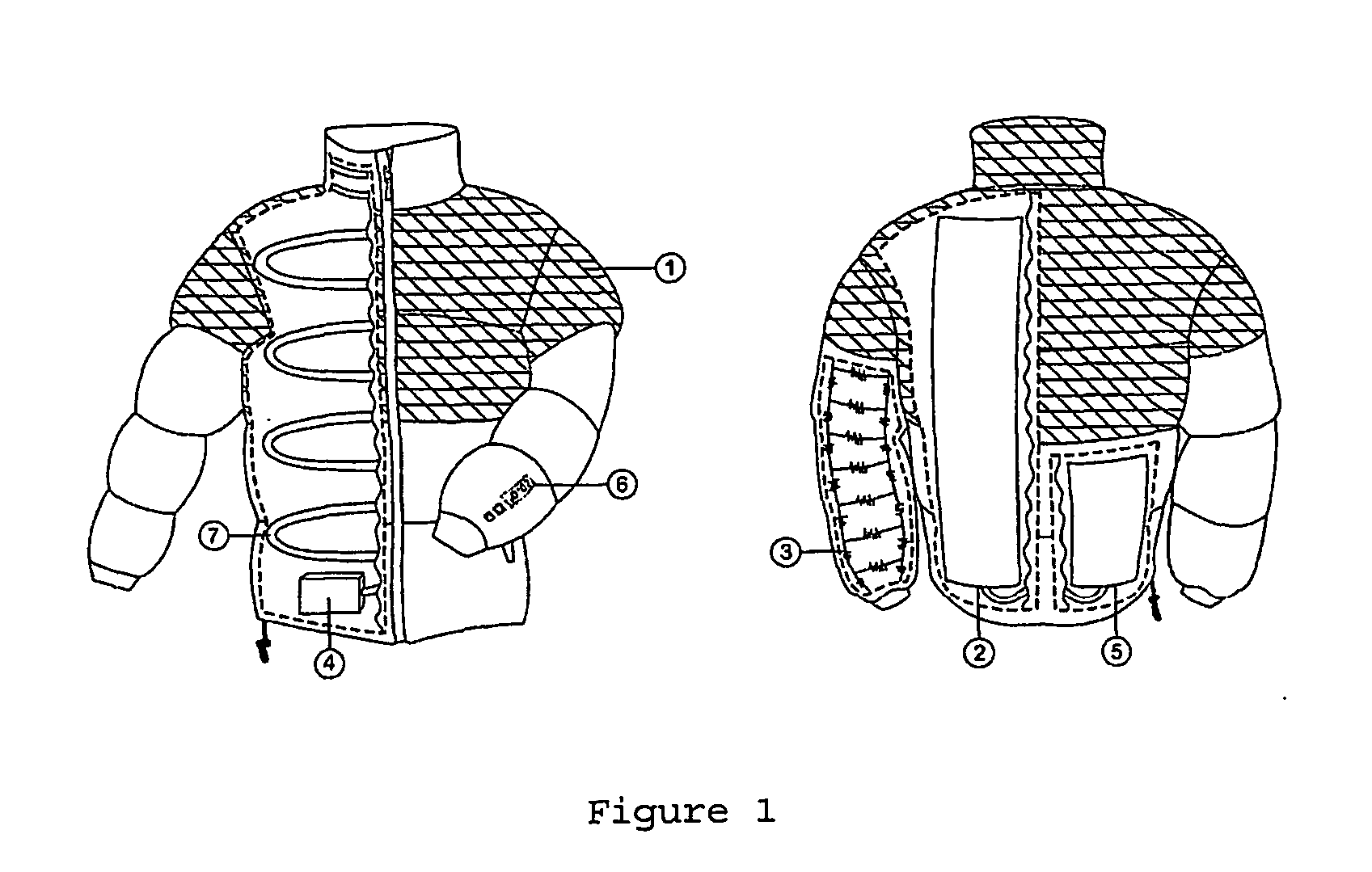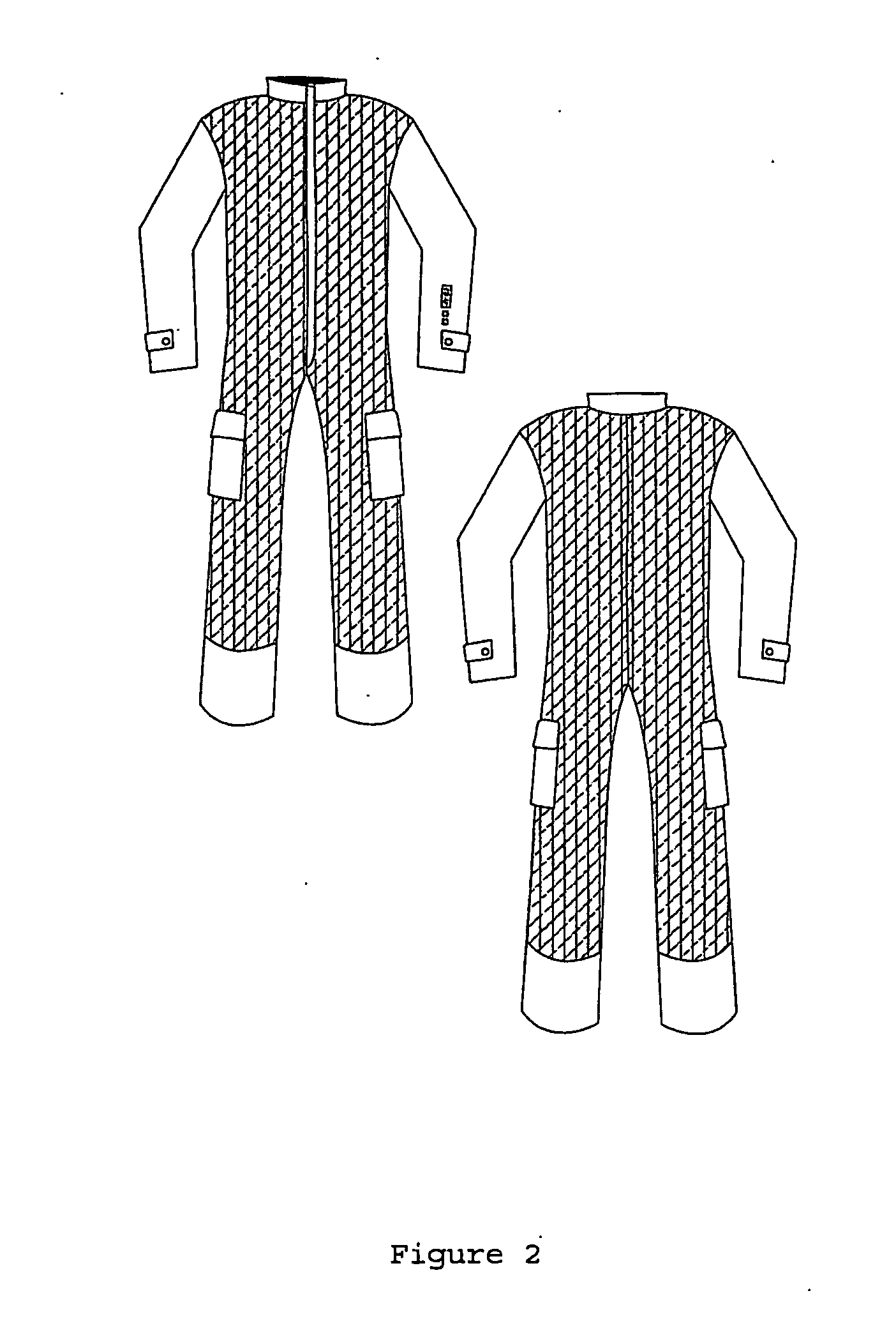Autonomous Garment With Active Thermal Control And Powered By Solar Cells
a solar cell and active technology, applied in the field of clothing, can solve the problems of low autonomy of batteries, inability to portability or autonomous systems connected to power lines, addition of thermal control units, etc., and achieve the effect of reducing limitations in portability and autonomy, increasing weight, and efficient management of temperature distribution and power resources
- Summary
- Abstract
- Description
- Claims
- Application Information
AI Technical Summary
Benefits of technology
Problems solved by technology
Method used
Image
Examples
Embodiment Construction
[0033] The presented invention refers to an autonomous garment with active thermal control and powered by solar cells.
[0034]FIG. 1 represents a piece of clothing that includes several units for powering, warming, cooling, and controlling the whole system.
[0035]FIG. 2 shows, as an example, a clothing uniform with the illustration of solar cells on the surface.
[0036] In a simple configuration, the system includes one or several pieces of clothing, solar cells (1), batteries (2), resistor circuits (3), refrigeration units (4), and an automatic thermal controller (6). Alternatively or together with the resistors and cooling units use Peltier cells (5), which can be used for heating and cooling. As Peltier cells are able to produce or remove heat in the same unit just by changing the current direction on the cell, garment versatility can be increased. The solar cells convert electromagnetic radiation in electric power, which is used to feed the electric devices. The distribution of res...
PUM
 Login to View More
Login to View More Abstract
Description
Claims
Application Information
 Login to View More
Login to View More - R&D
- Intellectual Property
- Life Sciences
- Materials
- Tech Scout
- Unparalleled Data Quality
- Higher Quality Content
- 60% Fewer Hallucinations
Browse by: Latest US Patents, China's latest patents, Technical Efficacy Thesaurus, Application Domain, Technology Topic, Popular Technical Reports.
© 2025 PatSnap. All rights reserved.Legal|Privacy policy|Modern Slavery Act Transparency Statement|Sitemap|About US| Contact US: help@patsnap.com



